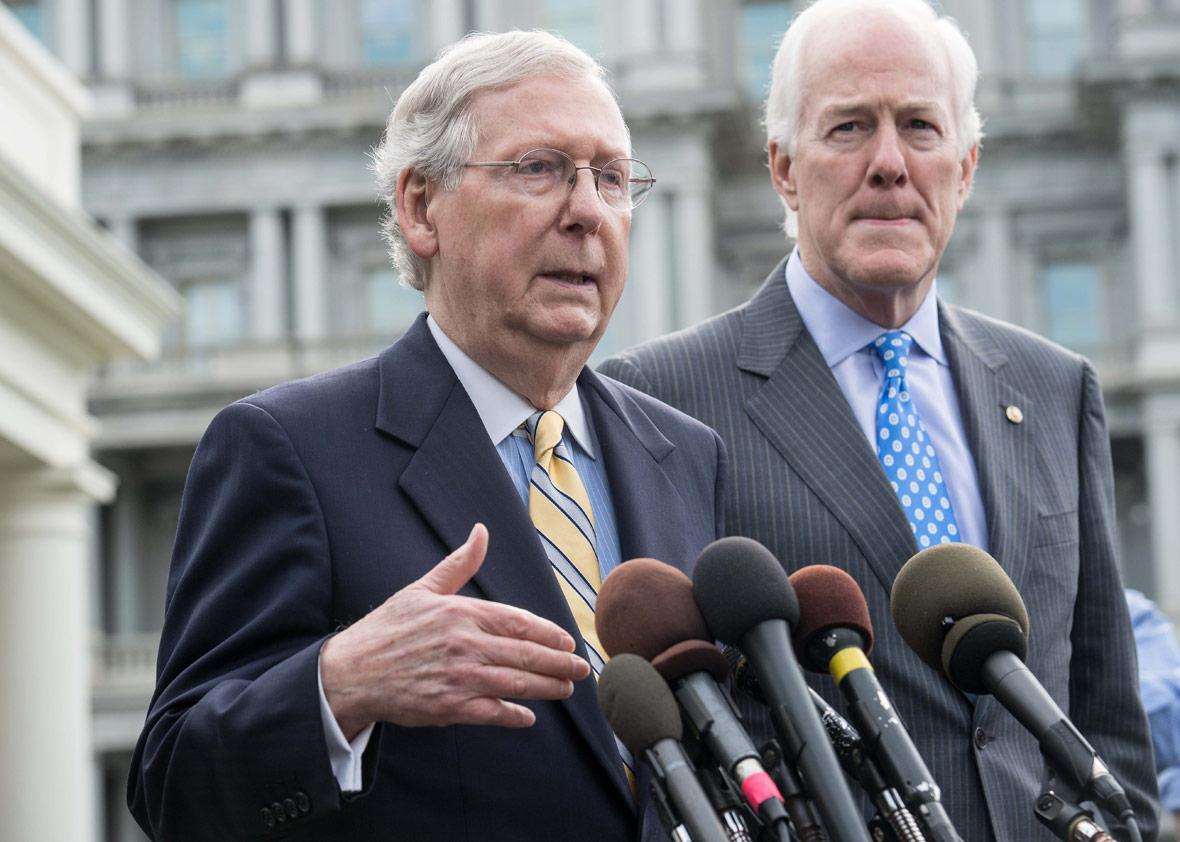There are two main lines of attack against the Better Care Reconciliation Act, the Senate GOP’s wildly unpopular health care bill. The first is that BCRA represents a massive redistribution of wealth—that poor and middle-class people will lose out due to its spending cuts while the rich will enjoy the lion’s share of its tax cuts. This argument has been so effective that some Republicans, such as Tennessee Sen. Bob Corker and Florida Sen. Marco Rubio, are signaling they want to pare back BCRA’s tax cuts for the rich, though it remains to be seen if their colleagues will follow. The second line of attack is that cutting spending on medical care—and in particular medical care for the poor—is unconscionable. This argument has incredible emotional resonance, and it is used against pretty much any legislation that seeks to curb medical expenditures.
Most of the time, these two attacks blend together: BCRA is bad because it finances tax cuts for the rich by cutting health benefits for the poor. But it’s important to recognize that these are distinct points. One could easily oppose shifting resources from the poor to the rich—as I do—while still believing that we need to keep medical spending in check.
For the sake of argument, imagine BCRA has been amended such that all of Obamacare’s taxes on high earners remain in place. Let’s call this imaginary legislation the “Even Better Care Reconciliation Act.” Rather than spend all of this “new” revenue on medical expenditures, however, EBCRA devotes most of it to expanding the earned-income tax credit for childless workers and the child tax credit for all families with children, with a special focus on the poorest families with the youngest children. What does any of this have to do with health care? Well, the argument would be that if poor families received a meaningful income boost, there is good reason to believe their general health and well-being would improve, which in turn would reduce their need for expensive medical care in the long run.
Back in the nonhypothetical realm, as the Manhattan Institute’s Oren Cass has observed, we’ve set up a system in which every additional dollar we spend to better the lives of poor people is almost always spent on medical care. Cass reports that since the mid-1970s, safety-net spending on people below the poverty line has doubled, but virtually all of the increase—91 percent—has been devoted to health spending. If we’re faced with a choice between giving a poor person $1 of Medicaid or nothing at all, we’d no doubt help her more by providing $1 of Medicaid. But as Cass asks, what if the choice is between $1 of Medicaid or $1 in some other form of social support? He points to evidence that states that spent relatively more on social services than on subsidized medical care had significantly better health outcomes than those that did not.
What accounts for this bias in favor of spending on the hospital-industrial complex and against spending on pretty much everything else? One explanation is that medical spending essentially increases on autopilot while spending on nonmedical services generally does not. State governments know the federal government will match their Medicaid spending. The federal government will do no such thing if a state government, say, provides subsidized employment opportunities for people who’ve just left prison. The things government does to help people that don’t involve modern medicine—the policies that get people back to work, give them the skills they need, help them deal with the challenges of raising young children, and much else—are funded by a grab bag of programs that have seen their funding grow slowly, if at all. Some of these programs work well, and many others do not. But one thing they all have in common is that they’re getting crowded out by our government’s increasingly narrow focus on subsidizing medical care.
